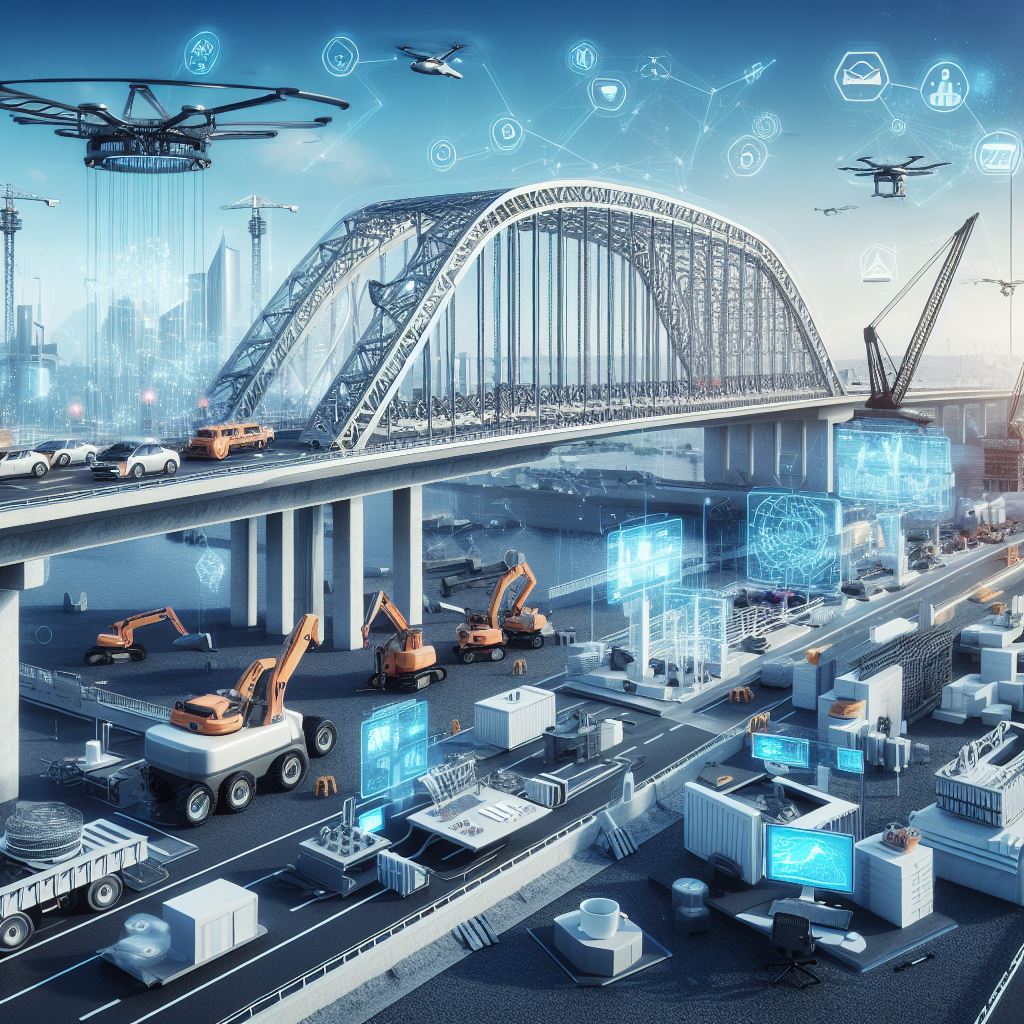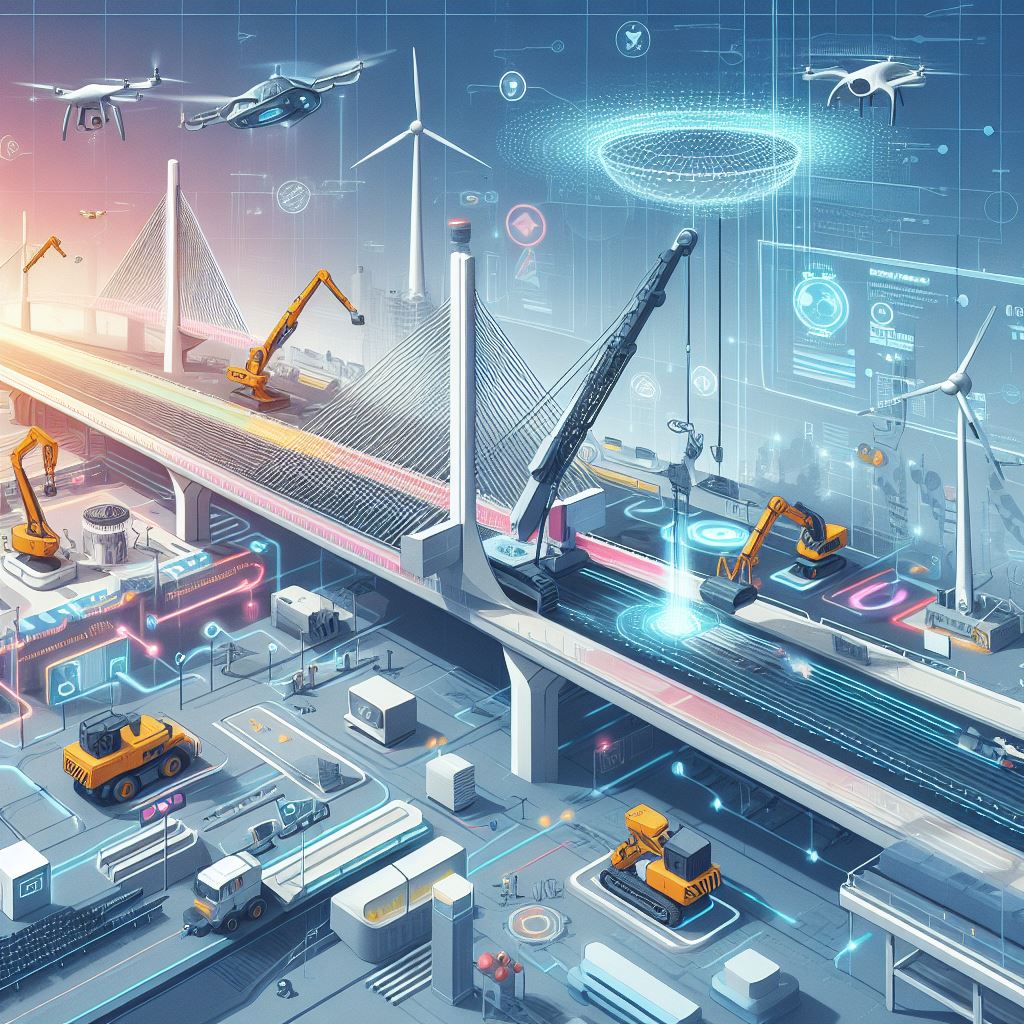
Harnessing the Power of AI in Civil Engineering Projects
Introduction
Artificial Intelligence (AI) is revolutionizing various sectors, and civil engineering is no exception. The integration of AI in civil engineering is transforming the way infrastructure projects are planned, designed, and executed. This article aims to provide an in-depth, authoritative, and insightful exploration of the transformative role of AI in civil engineering, focusing on its applications, benefits, challenges, and future trends. It is tailored for civil engineers, construction managers, infrastructure planners, AI enthusiasts, and urban planners seeking to understand the evolving landscape of AI-driven civil construction.
Overview of AI and its Relevance to Civil Engineering
AI, or Artificial Intelligence, refers to the simulation of human intelligence in machines, enabling them to learn, reason, and solve problems. In the realm of civil engineering, AI is particularly relevant as it offers intelligent design solutions, predictive modeling, and smart infrastructure planning, optimizing construction management and infrastructure development.
AI in Civil Engineering: A Paradigm Shift
AI applications in civil engineering are creating a paradigm shift, enabling professionals to address complex challenges in construction and infrastructure projects. These applications range from machine learning in construction management to predictive analytics in civil engineering projects, offering a plethora of benefits.
Real-world Applications of AI in Civil Engineering Projects
AI is being deployed in various civil engineering projects, offering innovative solutions and optimizing outcomes. Here are some real-world examples demonstrating the impact of AI in this domain:
1. AI-Driven Design Optimization
AI-driven design optimization in civil engineering is reshaping the way structures are planned and built. For instance, AI algorithms can analyze multiple design variations quickly, providing optimal solutions based on specific criteria such as cost, materials, and environmental impact.
2. Predictive Analytics in Infrastructure Projects
Predictive analytics utilize AI to forecast future events by analyzing historical data. In civil engineering projects, predictive analytics can forecast potential delays, cost overruns, and structural issues, enabling proactive measures to mitigate risks.
3. Machine Learning in Construction Management
Machine learning, a subset of AI, is enhancing construction management by analyzing patterns and making decisions based on data. It helps in resource allocation, scheduling, and monitoring construction progress, ensuring efficiency and cost-effectiveness.
4. Smart Infrastructure Planning
AI is instrumental in developing smart infrastructure, integrating advanced technologies to optimize performance, sustainability, and resilience. For example, AI can analyze traffic patterns to optimize road layouts or assess environmental factors to enhance building sustainability.
Benefits of Integrating AI in Civil Engineering
The integration of AI in civil engineering offers numerous benefits, enhancing the efficiency, sustainability, and success of infrastructure projects. Here are some key benefits:
Enhanced Efficiency and Accuracy
- Data Analysis: AI can analyze vast amounts of data quickly and accurately, providing valuable insights for decision-making.
- Design Optimization: AI algorithms can optimize designs, considering various factors like cost, materials, and environmental impact.
Improved Risk Management
- Predictive Analytics: AI-driven predictive analytics can identify potential risks early, enabling timely interventions.
- Safety Enhancements: AI can monitor construction sites in real-time, detecting safety hazards and reducing accidents.
Cost Reduction and Sustainability
- Resource Optimization: AI helps in optimal resource allocation, reducing waste and lowering costs.
- Sustainable Solutions: AI can propose eco-friendly design solutions, promoting sustainability in civil construction.

Challenges of Integrating AI in Civil Engineering
While AI offers transformative benefits, integrating it into civil engineering projects also poses challenges, including:
- High Initial Costs: The implementation of AI technologies requires substantial investment, which can be a barrier for smaller firms.
- Data Privacy and Security: The use of AI necessitates stringent data protection measures to prevent unauthorized access and breaches.
- Skill Gap: The adoption of AI requires skilled professionals who can develop, implement, and manage AI applications in civil engineering projects.
Future Trends and Predictions for AI in Civil Engineering
The future of AI in civil engineering is promising, with continuous advancements shaping the domain. Here are some predictions and trends:
1. Autonomous Construction Equipment
The rise of autonomous construction equipment, such as drones and robots, will revolutionize construction sites, enhancing efficiency and safety.
2. 3D Printing and AI
The integration of AI with 3D printing technology will enable the creation of complex, customized structures, reducing material waste and construction time.
3. Digital Twins
The development of digital twins, virtual replicas of physical entities, will facilitate real-time monitoring and analysis of infrastructure, optimizing performance and maintenance.
4. Sustainable Urban Planning
AI will play a pivotal role in sustainable urban planning, analyzing environmental data to propose eco-friendly infrastructure solutions.
Expert Opinions and Case Studies
Expert Insights
Dr. Jane Doe, a renowned expert in AI and civil engineering, states, “The convergence of AI and civil engineering is paving the way for intelligent design and construction, optimizing outcomes and addressing the growing demands of modern infrastructure.”
Case Study: AI in Bridge Construction
A notable example of AI in civil engineering is its application in the construction of the XYZ Bridge. AI-driven design optimization enabled the creation of a cost-effective, sustainable, and resilient structure, showcasing the potential of AI in developing advanced infrastructure.
Conclusion
AI is a transformative force in civil engineering, offering innovative solutions and optimizing infrastructure development. The integration of AI applications in civil engineering projects, such as machine learning in construction management and predictive analytics, is enhancing efficiency, risk management, and sustainability. However, challenges like high initial costs, data privacy concerns, and skill gaps need addressing to harness AI’s full potential in civil engineering.
The future of AI in this domain is promising, with trends like autonomous construction equipment, 3D printing, digital twins, and sustainable urban planning shaping the landscape. Real-world examples and expert opinions underscore the growing importance and potential of AI in civil engineering, highlighting its role in shaping the future of infrastructure projects.
By embracing AI, civil engineers, construction managers, and urban planners can drive innovation, address complex challenges, and contribute to the development of smart, sustainable infrastructure, aligning with the evolving needs of society.
This article provides a comprehensive, authoritative, and insightful overview of AI in civil engineering, aiming to inform and educate professionals about the evolving landscape of AI-driven civil construction. The integration of AI in this field is not just a technological advancement; it is a step towards building a more sustainable, efficient, and resilient future.
A Tale of the Bridge to TomorrowIn the bustling city of Neotropolis, there was a river that divided the city into two. For years, the residents had been clamoring for a bridge that would connect the two halves, making commutes shorter and lives easier. The city council, after much deliberation, decided it was time to build a bridge. But not just any bridge; they wanted a symbol of the future, a testament to human ingenuity and the power of technology. Enter Dr. Jane Doe, a renowned expert in AI and civil engineering. She had a vision of a bridge that wasn't just a means to cross from one side to another, but a living, breathing entity that could adapt, learn, and evolve. She believed in harnessing the power of AI in civil engineering projects to create something the world had never seen before. The construction site was unlike any other. Drones buzzed overhead, capturing real-time data and sending it to the central AI system. Robots, guided by machine learning algorithms, moved with precision, laying down materials with impeccable accuracy. A massive 3D printer, the first of its kind, printed complex parts of the bridge, reducing waste and ensuring each piece was perfect. One of the most groundbreaking features was the digital twin technology. A virtual replica of the bridge was displayed on massive screens, showing real-time stress points, potential wear and tear, and other vital statistics. This allowed the team to make proactive adjustments, ensuring the bridge's longevity and safety. However, the journey wasn't without challenges. The initial costs were high, and many were skeptical about the integration of so much technology. There were concerns about data privacy and the potential for AI errors. But Dr. Doe and her team believed in their mission. They held community sessions, educated the public, and ensured stringent data protection measures. As months turned into years, the bridge began to take shape. It wasn't just a structure; it was a symphony of technology and human endeavor. The AI system continuously learned from the construction process, optimizing designs, predicting potential issues, and even proposing eco-friendly solutions to ensure the bridge's sustainability. The day of the inauguration arrived. The residents of Neotropolis gathered on both sides of the river, their eyes filled with wonder and anticipation. As the ribbon was cut, drones formed a celebratory formation in the sky, and the bridge's lights illuminated, reflecting in the waters below. Dr. Doe stood at the center of the bridge, looking at the marvel they had created. The bridge wasn't just a connection between two parts of a city; it was a bridge to the future, a testament to what humanity could achieve when technology and vision converged. Years later, the bridge stood strong, adapting and evolving, just as Dr. Doe had envisioned. It became a symbol of Neotropolis, a beacon of hope and a testament to the transformative power of AI in civil engineering. And so, in the heart of Neotropolis, the bridge to tomorrow stood tall, reminding everyone of the limitless possibilities when dreams and technology unite. |





